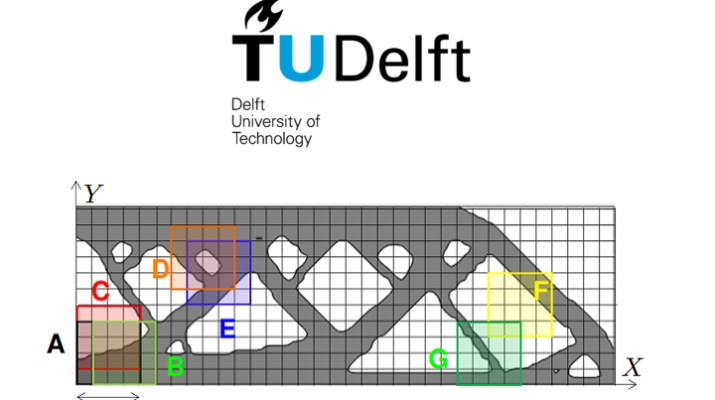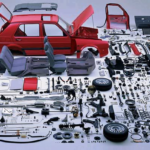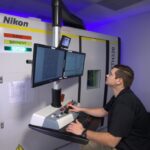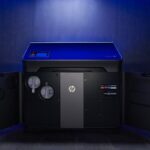
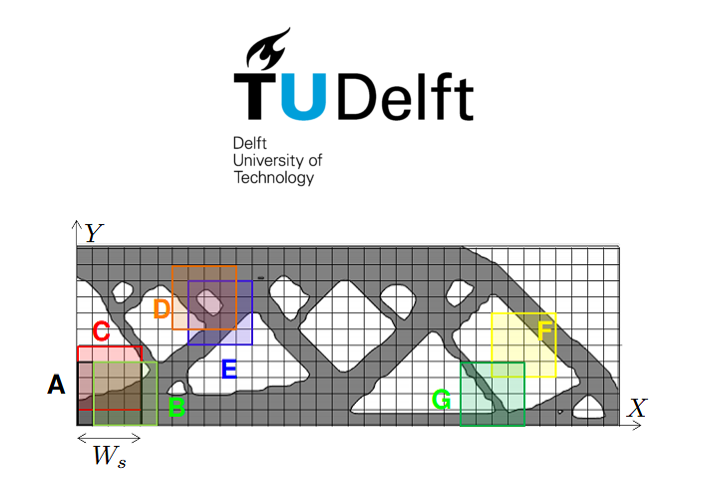
Selective Laser Melting (SLM), a powder-based 3D printing technique also known as Laser Beam Melting or Laser Powder Bed Fusion, has been used to process metal in a variety of sectors, such as automotive, medical, and aerospace. Because this AM method offers excellent freedom of form, it’s a perfect enabling technology for designs that are topology optimized; this means they have a complex layout, but still offer a superior performance. But, SLM 3D printers don’t always realize the dimensional accuracies that are necessary for very precise components.
Because of laser-induced heat, SLM 3D printed layers go through stages of rapid heating-cooling, which can cause inaccuracies, such as unwanted mechanical properties and poor surface finish. If certain design features, like thin sections and overhangs, that can cause local heat accumulation could be detected earlier in the design stage, this issue could be avoided more easily. To do this, next generation topology optimization (TO) methods need to be developed.
A group of researchers from TU Delft recently published a paper, titled “Towards Design for Precision Additive Manufacturing: A Simplified Approach for Detecting Heat Accumulation,” focused on a simper heat accumulation detection procedure – very important for creating a TO scheme that can account for thermal 3D printing aspects.
“In order to address thermal aspects of AM into a TO framework, an appropriate AM process model is required. This becomes problematic because a high fidelity AM process model is computationally very expensive and integrating it within a gradient-based TO framework becomes even more cumbersome,” the researchers explained in the paper. “Therefore, in this research, a physics based yet highly simplified approach is proposed in order to identify zones of heat accumulation in a given design. The computational gain offered by the simplification, makes it feasible to integrate the heat accumulation detection scheme within a TO framework.”
In addition to being used in a TO process, the team’s new procedure can also be used to independently analyze 3D printing designs, manual design improvements, and even determine the best build orientation.
Two simplifications made in this research can be used to help lower the computational cost that’s associated with the thermal analysis of 3D printable designs. The first, “motivated by the fact that the local geometry of only few previously molten layers” can significantly effect the new layer’s initial cooling rate, is to perform thermal analysis in the vicinity of the 3D printed layer being deposited.
The second is to use a steady, rather than transient, state thermal response to predict heat accumulation.

“For this purpose, a physics based conceptual understanding is developed which enables estimation of spatially averaged transient thermal behavior of a local geometry just from its steady state response,” the researchers wrote.
A structure’s topology can influence its internal heat flow; as such, different geometrical features in an AM design can obstruct or facilitate heat flow during the 3D printing process differently.
The researchers explained, “In this work we explore the possibility to approximately quantify, and hence compare, different geometries from the viewpoint of heat accumulation. For this purpose, first the concepts of thermal conductance and time constants are studied.”
Thermal conductance, equivalent to the reciprocal of thermal resistance, is a structure’s measure to conduct heat, while the time constant of the transient thermal response is studied to quantify the heating/cooling rate. The team also divided the design in their experiment into overlapping cells, so as to increase the possibility of detecting the heat accumulation zones.
High time constants were recorded close to overhang surfaces, and so the researchers discovered that heat accumulation for design features depends a lot on the nearby local geometry, and that “purely geometric design guidelines of prescribing a limiting overhang value might become insufficient for preventing problems associated with local heat accumulation.”
“The computational advantage offered by the proposed method enables development of a physics based topology optimization method which would be beneficial for designing precision AM components,” the researchers concluded. “Next step for this research is to combine the developed method with density based topology optimization by penalizing design features which are prone to heat accumulation during each iteration.”
Co-authors of the paper are Rajit Ranjan, Can Ayas, Matthijs Langelaar, and Fred van Keulen. The team will publish an additional paper on their heat accumulation detection method’s integration within a TO framework.
Discuss this research and other 3D printing topics at 3DPrintBoard.com or share your thoughts in the comments below.
When it comes to 3D real estate visualization in the USA, our service provides the perfect solution for bringing property listings to life. Through our platform, you can easily access cutting-edge 3D renderings that showcase your real estate projects in a way that attracts potential buyers and investors. Whether it's residential, commercial, or mixed-use properties, our team of experts uses advanced technology to create immersive visualizations that highlight the best features of your property, making it easier for clients to imagine the space as their own.
Through our website, you can quickly get high-quality 3D real estate visualizations that are tailored to your specific needs. With our help, you'll stand out in the competitive real estate market by offering potential buyers a realistic, interactive view of your property. Our efficient process ensures a fast turnaround time, while our attention to detail guarantees that every aspect of the property is represented accurately, giving you a powerful marketing tool to promote your real estate listings.


